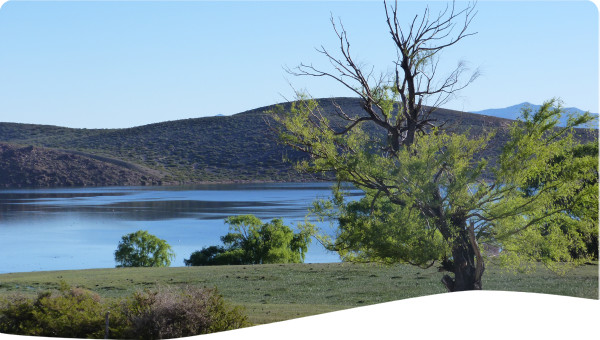San Juan Olintepeque is a rural municipality located in the Department of Quetzaltenango in the Western Highlands of Guatemala. 44% of its territory is covered by an oak-pine forest (136.15 km2), which is managed by the municipality’s Forest Office. The water supply in the municipality is mainly through mechanical wells. Deforestation has impacts not only on energy availability but on water availability and the hydrological cycle.
In San Juan Olintepeque, the water supply for human consumption comes mainly from groundwater. There are 25 mechanical wells with coverage of 96% of the population. In 2007, an assessment of the water situation in the municipality was conducted which established that the availability of groundwater has decreased significantly from 100 feet in the 70’s, to 700 feet in 2004. The conservation of the forest is of main importance to improve water recharge processes and guarantee water supply for the community. As the population is dispersed, water distribution and collection of money for provision services presents a challenge. Those homes with access to water distribution are connected via conduction tube lines, though many lack water meters.
Historically, most of the population within rural areas can take up to 4 months to pay water bills. The money collected is only invested on operating expenses, distribution, and maintenance of infrastructure; no money is allocated for water services such as sanitation or conservation of the water supply. In addition, the costs of water service provisions are 33% higher than the average income within the municipality, requiring the municipality to subsidize its services (Letona, 2014). In order to improve conditions of the water service, many actions must be taken. However, one of the most important steps is to guarantee water provision and availability from the source. This can be approached by investing in forest conservation and recovery.
In Guatemala, Payment, for Environmental Services (CES) has been well-established as a strategy for conservation of forest ecological services, since it is part of a national Forest Policy supported by economic resources. The CES mechanism has been used as a strategic alternative that allow local people, stakeholders, and government to engage and establish social agreements for the conservation of natural resources.
The development of a hydrological CES in the Guatemalan municipality of San Juan Olintepeque started in 2012, by an initiative from the National Forest Institute and HELVETAS Swiss Cooperation, working with the support of several institutions such as Kim Tzu Pop, the Municipality of San Juan Olintepeque, The Nature Conservancy, and REDD/CCAD-Giz Program. Local communities were also involved and funding was from the Climate Nature and Communities consortium and the Fund for Tropical Forests. The activities were conducted under the Probosques program from the HELVETAS Swiss Cooperation, and though the Probosques program has ended, the CES mechanism is intended to be permanent.
The first steps taken were to conduct biological and hydrological surveys to analyze the benefits and services provided by the forest and their impact on the municipality. This information together with the Forest Management Plans (made as part of the PINFOR program) provided strong arguments to convince local communities and the municipalities about the importance of taking action to conserve, manage, and recover the municipal forest. Secondly, the CES mechanism was designed by INAB together with the institutions mentioned previously. It identified the water provider (municipal forest), water users, contributions to be made by the users according to their economical capacity, adding other funding coming from PINFOR incentives, and the organizational structure inside the mechanism.
An outcome of the development of the CES was the establishment of baseline data on the hydrological services provided by the municipal forests within San Juan Olintepeque. After the establishment of the hydrological CES framework, reforestation activities were started and in-kind contributions in nursery activities were made. The municipality also started charging the fee to those citizens falling in the “in-cash” category; by the end of the year, 28% of the people had paid. Similarly, 6 rainwater collectors for mini-irrigation systems were constructed to raise the production of potatoes up to one additional harvest per year and 12 water sources were maintained. 16 workshops were conducted to train people from the communities on implementing activities for climate change adaptation. And REDD CCAD-GIZ donated support equipment for the Forest Municipal Office and equipment for the people that will be giving in-kind contributions. Also, after signing the CES agreement, the Municipality Department of Protected Areas and Environment (DAPMA) started developing conservation, management, and recovery actions with a forest-based approach to improve water recharge in strategic areas.
Ensuring community representation within the CES mechanism (such as through the COCODE’s, Water Committees, or from other kinds of existing community organization) is important to facilitate inclusive communication with local people and improve the CES outcomes.
Establishing a political frame such as a Municipal Agreement is a key factor for assuring the continuity and sustainability of the CES.
Having a continuous program of communication with environmental facts and success stories, even after the implementation of the CES, is important to achieve local people’s permanence inside the CES and help raise awareness.
Capacity building at all levels is necessary so the Coordination Board can generate support and advocacy from authorities, water beneficiaries, and the local people.
 Case studies
Case studies


